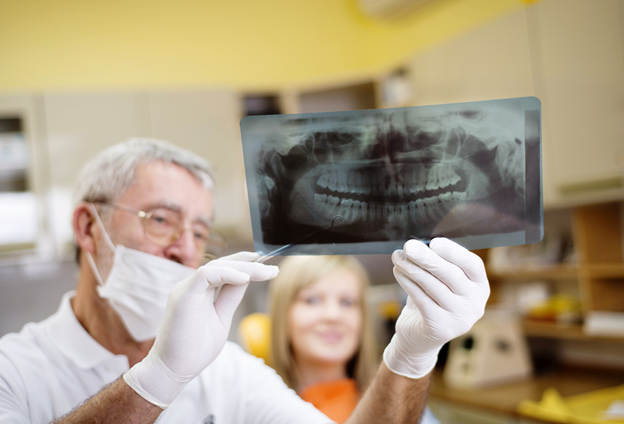Highlights
- Learn what to expect before, during, and after a tooth extraction
- Understand the phases of recovery and typical healing timelines
- Find tips for managing discomfort and avoiding complications like dry socket
- Get advice on food, oral care, and lifestyle adjustments after extraction
- Know when to contact your provider for follow-up care
- Discover how a respected Tucson dentist with strong community ratings can guide your healing process
Why Tooth Extractions Are Sometimes Necessary
Tooth extractions are more common than most people think, and they’re not always due to poor oral hygiene. Dentists may recommend removing a tooth for several reasons: severe decay, trauma, overcrowding, infection, or preparation for orthodontic treatment. Wisdom teeth are especially notorious for causing pain or alignment issues, often requiring removal before they disrupt neighboring teeth.
While the idea of having a tooth pulled may sound intimidating, modern techniques make the procedure quick and relatively comfortable. Extractions are typically performed under local anesthesia, with the option for sedation in more complex cases. Once the tooth is removed, the focus shifts to healing, and that’s where proper aftercare makes all the difference.
Types of Tooth Extractions and What to Expect
Not all tooth extractions are the same. There are two main types: simple extractions and surgical extractions. A simple extraction is performed on a visible tooth and usually involves loosening it with a dental tool (called an elevator) and removing it with forceps. These are often quick and involve minimal downtime, especially if the tooth has already been compromised.
Surgical extractions are more complex. They’re needed when a tooth is broken at the gum line, impacted (like many wisdom teeth), or if multiple teeth are being removed at once. This type of extraction often requires incisions in the gum and sometimes bone removal. Recovery may take longer, and patients may experience more swelling and discomfort initially.
Understanding the type of extraction you’re having helps you prepare for the appropriate recovery timeline. Your dentist should clearly explain the procedure, anesthesia options, and personalized aftercare recommendations.
The First 24 Hours: Starting the Healing Process
The first 24 hours after a tooth extraction are critical to a smooth recovery. During this time, your body begins forming a blood clot at the site, which is essential for proper healing. That clot acts as a protective layer over the underlying bone and nerve endings. If it’s dislodged too soon, a painful condition known as dry socket can occur.
To minimize risk, your dentist will advise you to bite down gently on gauze for 30 to 45 minutes after the procedure. Avoid rinsing, spitting, or using a straw during this time, as these actions can disturb the clot. Swelling and mild bleeding are common, but using an ice pack and resting with your head elevated can help reduce discomfort. Stick to soft foods and avoid hot or crunchy meals that could irritate the area.
Days 2 to 3: Managing Pain and Swelling
By the second or third day, much of the acute pain and bleeding should have subsided. However, swelling may still be present, especially after wisdom tooth removal. Over-the-counter pain relievers such as ibuprofen or acetaminophen can help you stay comfortable. If your dentist prescribed antibiotics, be sure to take them exactly as directed to prevent infection.
Gentle rinsing with warm salt water can start around the 24-hour mark to help keep the area clean—just don’t swish too forcefully. Continue eating soft, cool foods like applesauce, yogurt, smoothies, and mashed potatoes. Many patients report that this is the most manageable phase of recovery, as pain levels become more predictable and energy levels begin to return.
Days 4 to 7: Signs of Progress
Most patients begin to feel significantly better by the end of the first week. The extraction site will likely still be tender, but swelling should be down, and normal activities can usually resume. The soft tissue continues to heal, and new gum tissue will begin forming over the site. Any stitches placed during the extraction may dissolve on their own or be removed by your dentist during a follow-up visit.
This is a good time to resume more routine oral hygiene practices, brushing and flossing as usual, but gently around the extraction area. Your dentist may also recommend a post-op checkup to ensure everything is healing properly. A respected Tucson dentist with strong community ratings can also offer tailored recovery tips and alert you to any concerns early on.
When Healing Doesn’t Go as Planned
Although complications are rare, it’s important to recognize the signs that something may be wrong. One of the most common issues is dry socket, which usually appears around day three or four with a sharp, persistent pain that radiates toward the ear or jaw. The clot at the extraction site becomes dislodged or dissolves, exposing bone and nerves. It’s treatable, but very painful, so early diagnosis is key.
Other symptoms to watch for include excessive bleeding, foul odor or taste, pus, or fever—all of which may signal infection. According to the Cleveland Clinic, dry socket occurs in about 2–5% of routine tooth extractions and up to 30% of wisdom tooth removals (source). Contact your provider promptly if anything feels off. Waiting too long can delay healing or worsen the condition.

Eating and Lifestyle Adjustments During Recovery
Your diet has a huge impact on healing after a tooth extraction. During the first few days, avoid anything too hot, spicy, crunchy, or sticky. Foods like oatmeal, broth, scrambled eggs, and smoothies are not only safe but also help you stay nourished during recovery. Hydration is just as important, but skip the straw to avoid creating suction that can loosen the clot.
Additionally, avoid smoking, vaping, or drinking alcohol during recovery. According to the American Association of Oral and Maxillofacial Surgeons, smoking can delay healing and significantly increase the risk of dry socket (source). Rest, avoid strenuous physical activity for a few days, and follow your provider’s exact instructions for best results.
Long-Term Healing and Next Steps
While the soft tissue typically heals within 1 to 2 weeks, the bone underneath takes longer, often a few months. If you’re planning on getting a dental implant, bridge, or other restoration, your dentist will monitor the site and determine the right time to proceed. For simple extractions, once the tissue closes, you can usually return to full dental function with minimal long-term impact.
In the meantime, it’s essential to keep regular dental visits and maintain excellent oral hygiene. Left untreated, adjacent teeth can shift into the space, creating alignment issues or bite problems. Your provider may discuss options for tooth replacement if necessary.
Partnering With the Right Dentist Matters
Tooth extractions may seem routine, but the recovery process varies from person to person. Following the right aftercare steps makes a big difference in how quickly and comfortably you heal. Rest, proper hygiene, soft foods, and listening to your body will all help promote a smooth recovery.
Just as important as following instructions is choosing the right provider. A respected Tucson dentist with strong community ratings will not only perform the extraction safely but also offer reassurance and clear follow-up care. Their guidance can prevent avoidable complications and reduce your anxiety before and after the procedure.
Additionally, if you’re planning future dental work like implants, crowns, or orthodontics, your dentist can help map out next steps once your extraction site heals. With the right support, your recovery becomes part of a long-term plan for better oral health and confidence in your smile.





Be First to Comment